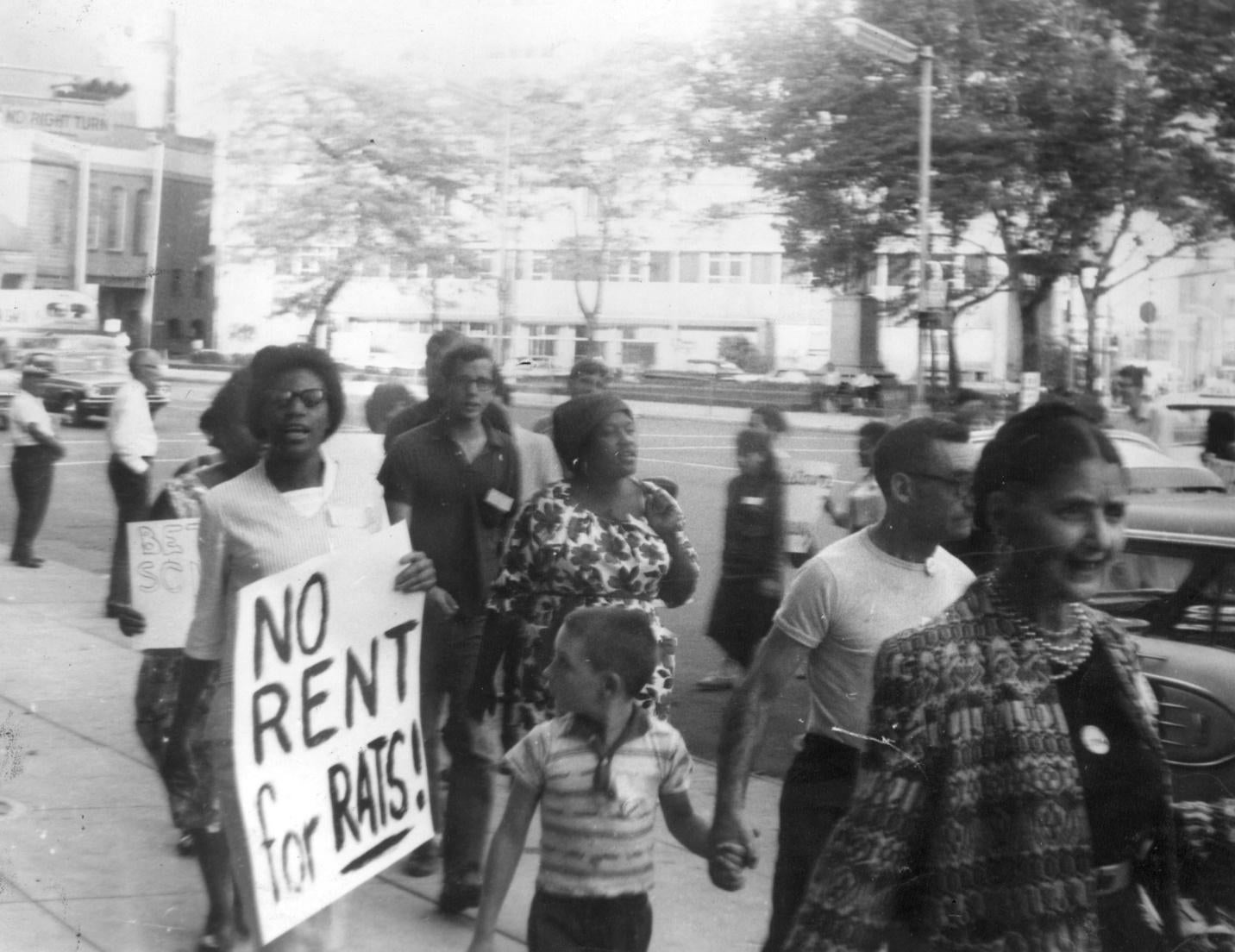The 1965 RAT PROTEST was a demonstration held by the Citizens Committee for an Adequate Cleveland Community Action Program (CCACCAP), an interracial anti-poverty group of welfare rights activists. The organization marched downtown on 13 August 1965. In coordination with the INNER CITY PROTESTANT PARISH, the STUDENTS FOR A DEMOCRATIC SOCIETY, the Congress of Racial Equality, and other social justice organizations, impoverished Clevelanders brought broken furniture, inadequate clothing, and other evidence of their impoverished living conditions into the streets of Cleveland.
These protesters agreed that the worst marker of poverty in their homes was rats. In preparation for this demonstration, welfare rights activists trapped and killed rats in their homes to bring to the protest; they threw three on the steps of CITY HALL. Four activists were arrested for violating the city’s health code. Dumping a dead animal on public property had a maximum sentence of $200 fine and sixty days in jail. All four protesters received guilty verdicts a few months before the HOUGH RIOTS in 1966.
These protesters sought to bring attention to the problems they lived with as impoverished Clevelanders, and to call for adequate representation in the welfare policy-making process. While the protesters marched, the Board of Trustees for the COUNCIL FOR ECONOMIC OPPORTUNITIES OF GREATER CLEVELAND (CEOGC) met inside City Hall. This board dispersed federal funds, available through President Lyndon B. Johnson’s War on Poverty, for combating poverty.
Cleveland’s rat population flourished into the 1960s and rivaled other large cities’ in the country, despite the city’s efforts to combat this public health problem. Overpopulation and infrequent trash collection, which a 1962 governmental study urged the city to double, made the problem worse in city slums. During urban renewal, construction companies created new refuse dumping sites near African American public housing units, worsening the problem for impoverished African Americans. The city employed four Food and Drug sanitarian workers to combat the rodent population and published the Rat News Quarterly to educate Clevelanders about rat prevention on their own properties.
For a year before the rat protest, members of the CCACCAP, led by co-chairmen Carole King and Reverend Paul Younger, repeatedly petitioned the CEOGC to achieve greater representation of the poor on their Board of Trustees. Originally, the CCACCAP asked for an additional twenty-two members, which would have doubled the board. After months of no progress, they offered a compromise of eleven new members. One welfare recipient, Mrs. Robbie Penman, managed to gain membership on the board, which the CCACCAP regarded as a token offer.
These activists thought it was vital that board members who would write and approve welfare policy in Cleveland understand poverty conditions first-hand. Their proposal required that any new members be residents of the areas targeted for welfare relief programs and grants. At the time of their efforts, the board was mostly composed of politicians and business owners.
After a year of press releases, meetings, and writing proposals without making progress to their goal of adequate representation, the CCACCAP members decided that the CEOGC was not going to budge. Welfare rights activists planned the rat protest because they did not think they were getting anywhere using the proper channels. They decided their best option was to bring poverty into the streets - drawing public attention to their demand for representation and to the conditions in which they lived.
Kimberly Stahler


